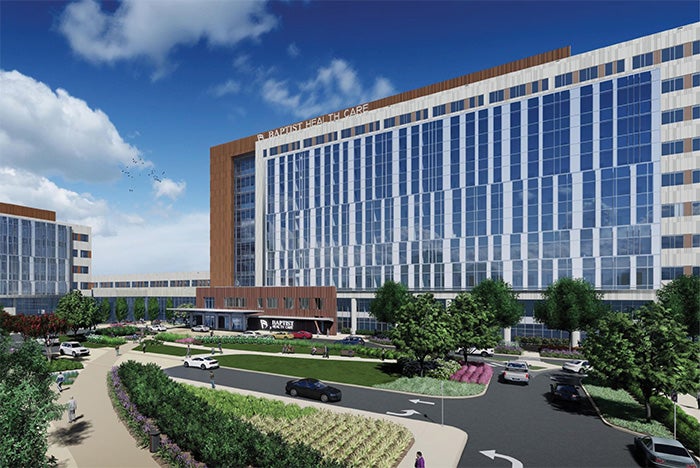Design team incorporates pandemic preparedness in planning strategy
Opened in 1951, Baptist Health Care’s existing campus in Pensacola, Fla., has undergone multiple additions and renovations during its 72-year history. Challenged with dated infrastructure, inadequate patient-care spaces, and undersized and inefficient clinical departments, the design team working on a new Brent Lane campus provided the hospital with a solution centered around value-added design goals that embraced the future.
The solution included a unique mechanical, electrical and plumbing (MEP) engineering approach for the time. What could not have been foreseen in the immediate future, however, was that a global pandemic was just around the corner.
One year into this unprecedented health crisis, hospital staff were challenged by a consistently high patient census due to the large volume of COVID-19 cases that required negative-pressure isolation rooms. The influx of patients necessitated that spaces not normally used for patient care be temporarily converted to house infected patients with beds, oxygen and other support services. As a result, staff proposed to change the planned patient rooms into isolation rooms during the design phase of the project to give the facility an adequate number of isolation rooms should a future pandemic occur.
Instead of redesigning infrastructure and systems for a single, unknown catastrophic occurrence, the design team worked with hospital staff to understand their challenges and why they were asking for additional isolation rooms. From there, the design team forged a clear goal to deploy a long-term solution that relied on short-term modifications that would temporarily address the hospital’s immediate needs yet not impact operations indefinitely.
The design team’s solution was to add necessary MEP infrastructure and develop a plan for implementing temporary systems that would convert patient rooms into isolation rooms should the need arise. This engineering solution involved designing and installing the exhaust duct system and electrical systems for temporary mechanical equipment.
By using this approach, the facility’s family waiting room can be converted into an equipment room during pandemic conditions to house a temporary exhaust fan and makeup air system that connects to a removable window for an intake louver. The design team also devised an expandable dual-nurse call system that allows two patients to be collocated in a single isolation room if needed and doubles the capacity of all negative pressure isolation rooms.
By incorporating a more thoughtful and flexible solution, the project was able to avoid redesign costs and schedule changes that would have impacted the overall project budget. With long-term flexibility top of mind, the adaptable design solution gave the hospital the ability to administer the care it needed without affecting long-term operations or compromising project metrics.





